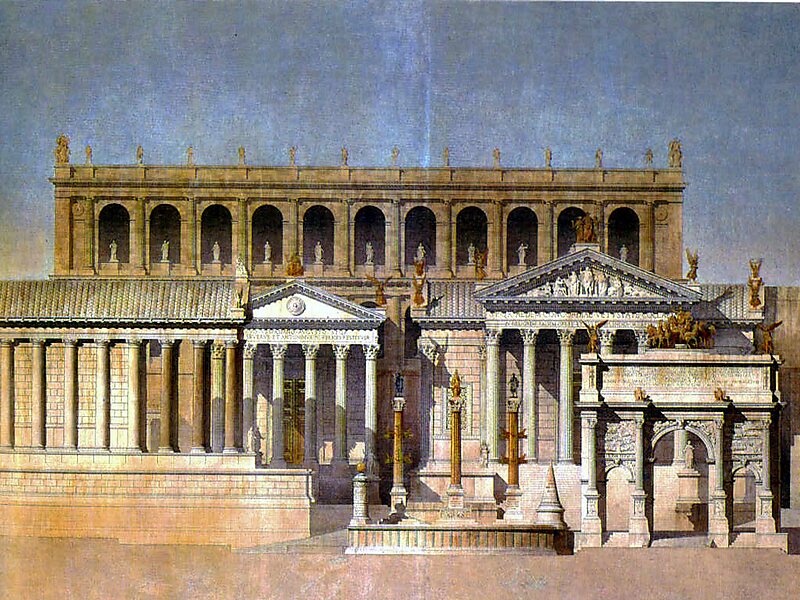Vespasiano's Historical Significance In Italian Architecture
Share
Vespasiano, a name that resonates through the annals of Italian history, is not just a figure of political power but a cornerstone in the evolution of Italian architecture. His reign marked a pivotal moment in the architectural landscape of Italy, characterized by innovation, grandeur, and a deep connection to Roman heritage. This article will explore the historical significance of Vespasiano in Italian architecture, examining the key elements that define his impact and the lasting legacy he left behind.
The Architectural Context of Vespasiano's Era
To understand Vespasiano's influence, it is essential to grasp the architectural context of his time. The late 1st century AD was a period of transformation in the Roman Empire, marked by the shift from the Julio-Claudian dynasty to the Flavian dynasty. Vespasiano ascended to power in 69 AD, a time when Rome was in turmoil following the Year of the Four Emperors. His leadership not only stabilized the empire but also heralded a new era of architectural ambition.
Key Features of Flavian Architecture
Flavian architecture is characterized by several distinct features that emerged during Vespasiano's reign:
-
Use of Concrete: Vespasiano's era saw the extensive use of concrete, which allowed for more complex and durable structures. This innovation was crucial in the construction of monumental buildings.
-
Amphitheaters: The construction of the Colosseum, originally known as the Flavian Amphitheater, is perhaps the most significant architectural achievement of Vespasiano's time. This iconic structure exemplifies the grandeur and engineering prowess of the era.
-
Triumphal Arches: Vespasiano's reign also witnessed the proliferation of triumphal arches, which celebrated military victories and served as symbols of imperial power.
The Colosseum: A Testament to Vespasiano's Vision
The Colosseum stands as a monumental testament to Vespasiano's vision and ambition. Commissioned by Vespasiano in 70 AD and completed in 80 AD under his son Titus, this architectural marvel was designed to host gladiatorial contests and public spectacles.
Architectural Innovations
The Colosseum introduced several architectural innovations, including:
-
Complex Vaulting Systems: The use of arches and vaults allowed for the creation of large, open spaces that could accommodate thousands of spectators.
-
Seating Arrangements: The tiered seating arrangement ensured that all spectators had a clear view of the arena, showcasing the importance of spectator experience in Roman architecture.
-
Advanced Engineering Techniques: The construction techniques employed in the Colosseum set a precedent for future architectural endeavors, influencing the design of amphitheaters throughout the empire.
Vespasiano's Influence on Urban Planning
Vespasiano's architectural legacy extends beyond individual structures; he played a crucial role in the urban planning of Rome. His reign marked a shift towards a more organized and aesthetically pleasing city layout.
The Forum of Vespasiano
One of the most significant contributions to urban planning during Vespasiano's reign was the construction of the Forum of Vespasiano. This public space served as a center for political, social, and economic activities, reflecting the importance of civic life in Roman society.
-
Architectural Cohesion: The Forum was designed with a cohesive architectural style that unified various buildings, creating a harmonious urban environment.
-
Public Accessibility: Vespasiano emphasized the importance of public spaces, ensuring that the Forum was accessible to all citizens, thereby fostering a sense of community.
The Legacy of Vespasiano in Italian Architecture
Vespasiano's influence on Italian architecture is profound and enduring. His innovative approaches and monumental constructions set the stage for future architectural developments in Italy and beyond.
Influence on Renaissance Architecture
The architectural principles established during Vespasiano's reign laid the groundwork for the Renaissance, a period characterized by a revival of classical ideals. Architects such as Bramante and Michelangelo drew inspiration from the structures of the Roman Empire, including those commissioned by Vespasiano.
Preservation of Roman Heritage
Vespasiano's commitment to monumental architecture contributed to the preservation of Roman heritage. Many of the structures built during his time have survived through the centuries, serving as a source of inspiration for generations of architects and artists.
Conclusion: Vespasiano's Enduring Impact
Vespasiano's historical significance in Italian architecture cannot be overstated. His innovative spirit, commitment to public spaces, and monumental constructions have left an indelible mark on the architectural landscape of Italy. As you wander through the streets of Rome, take a moment to appreciate the legacy of Vespasiano, a visionary whose influence continues to shape the world of architecture today.
For those planning a visit to Rome, consider booking your accommodations and flights to fully immerse yourself in the architectural wonders that Vespasiano helped create.
Experience the grandeur of Vespasiano's architectural legacy firsthand and discover the stories that these magnificent structures hold.




